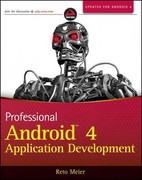Answered step by step
Verified Expert Solution
Question
1 Approved Answer
Operators are overloaded by means of operator functions, which are regular functions with special names: their name begins by the operator keyword followed by the
Operators are overloaded by means of operator functions, which are regular functions with special names: their name begins by the operator keyword followed by the operator sign that is overloaded. The syntax is:
type operator sign parameters body
Consider a Cartesian vector example in D that are sets of two coordinates: x and y The addition operation of two cartesian vectors is defined as the addition both x coordinates together, and both y coordinates together. For example, adding the cartesian vectors
and together would result in This could be implemented in C with overloading operators.
Similarly, the subtraction operation of two cartesian vectors is defined as the subtraction
of x coordinates, and y coordinates of each vector. For example, subtracting the cartesian
vectors and together would result in This could be implemented in C with overloading operators.
c a b;
c aoperatorb; Both expressions are equivalent!
The operator overloads are just regular functions which can have any behavior; there is actually no requirement that the operation performed by that overload bears a relation to the mathematical or usual meaning of the operator, although it is strongly recommended. For example, a class that overloads operator to actually subtract or that overloads opera tor to fill the object with zeros, is perfectly valid, although using such a class could be challenging.
The parameter expected for a member function overload for operations such as operator is naturally the operand to the right hand side of the operator. This is common to all binary operators those with an operand to its left and one operand to its right But operators can come in diverse forms. Here you have a table with a summary of the parameters needed for each of the different operators than can be overloaded please replace @ by the operator in each case: Where a is an object of class A b is an object of class B and c is an object
Expression Operator
Member function
Nonmember function
@a
&
A::operatore
operator@A
a@
A:: operator@int
operator@A int
a@b
& &&
A::operator@B
operator@AB
a@b
&
A::operator@B
abc
A::operatorB C
ab
A::operator
TYPE a
TYPE
A:: operator TYPE
of class C TYPE is just any type that operators overloads the conversion to type TYPE
Step by Step Solution
There are 3 Steps involved in it
Step: 1

Get Instant Access to Expert-Tailored Solutions
See step-by-step solutions with expert insights and AI powered tools for academic success
Step: 2

Step: 3

Ace Your Homework with AI
Get the answers you need in no time with our AI-driven, step-by-step assistance
Get Started


